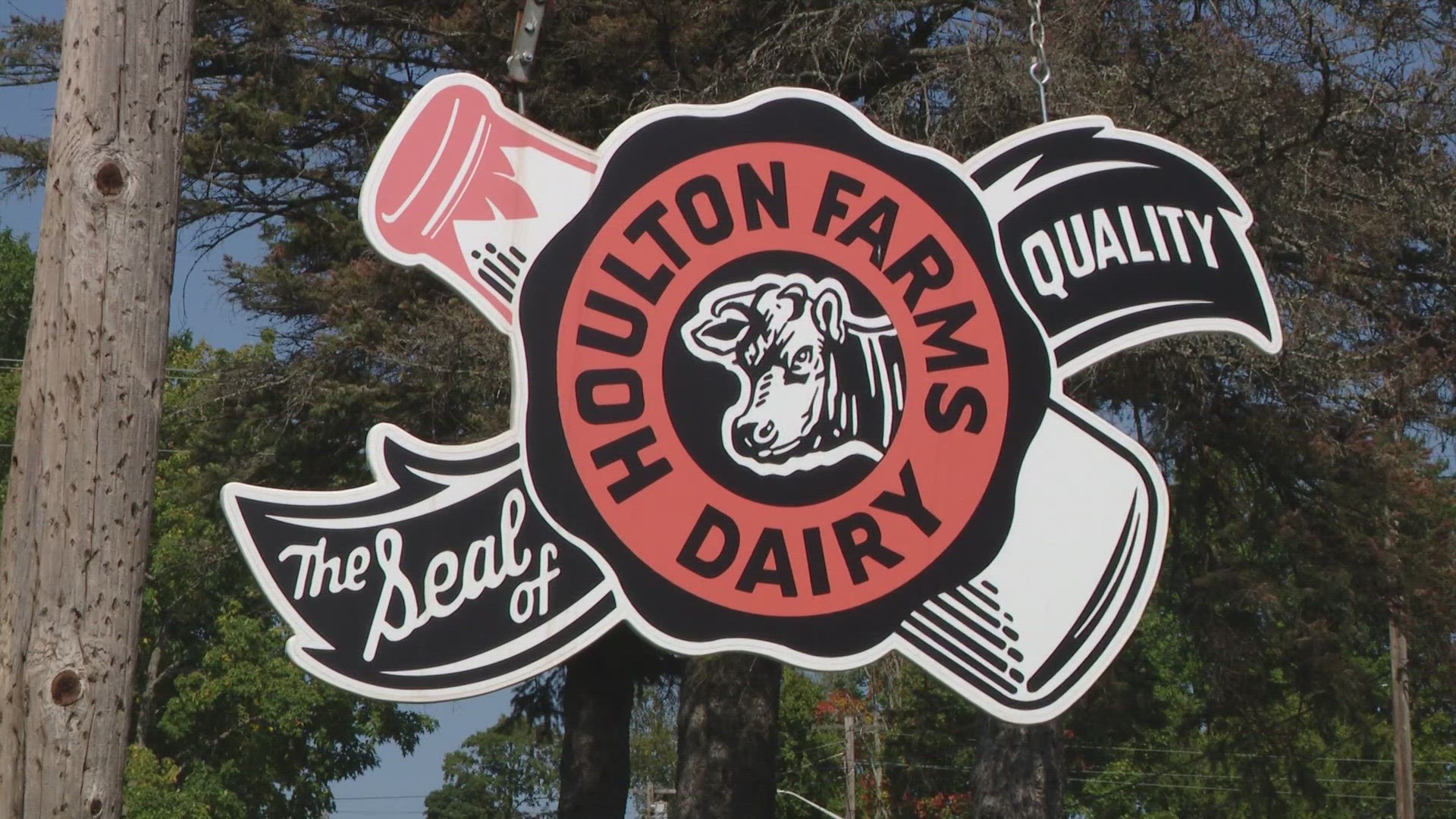HOULTON, Maine — The big, stainless steel drum rotates and then comes to a stop as Eric Lincoln peers into a small window in the drum’s side.
"That’s what I’m looking for right there," Lincoln said.
What he’s looking at is butter, about 450 pounds of it, freshly churned at Houlton Farms Dairy.
Once that new butter is drained of all remaining milk, washed twice, drained again, and salted, it becomes a prized product on Aroostook County store shelves.
So popular, in fact, that some stores have had to limit daily purchases to one or two pounds per customer. In other words, butter rationing.
"Not many people make the butter the way we do," Lincoln said. "Not many could afford to make it the way we do."
They make the butter one batch at a time, three days a week. It's then frozen overnight, then cut into one-pound blocks that go to the stores. Total production, Lincoln said, is about 1,200 pounds per week.
"You’ve got to have a good eye for when it's churned, and then when I wash it to have the right amount of warm water [when washed] so it doesn’t get too hard or too soft."
Lincoln knows all the ins and outs of the process. He says they do it the old-fashioned way—separating the cream when the milk is cold, while most other dairies do it when the milk is warm. He also continues to use an old vacuum tank system in the milk processing that he says filters out any unpleasant tastes in the cream.
He has been the small dairy’s only butter maker for the past 40 years and knows their butter is so prized by customers that some travel long distances to buy it.
"Yes, they drive for hours. People drive three hours, five hours. Somebody came from New Hampshire."
Houlton store owner Andy Marino says some shoppers try to trick him into selling them extra butter.
"We’ve heard all the stories come out, somebody’s from Alabama or they’ve got a sick grandmother, that sort of thing."
Lincoln had another story to share.
"We even had one customer in a small town [who] went in and bought a pound, went out changed her hair, went back in. The third time she changed her clothes and the clerk caught on to that, why did you do that? There's been all kinds of stories we’ve heard. Nothing surprises me anymore."
The stories and the butter rationing signs, however, also tell a more serious story—and hint at the real challenges for Maine’s dairy industry.
Houlton Farms Dairy is facing what Lincoln says is its "most challenging time" because people are buying less milk. He says the trend has been building for several years, but the past two have seen a bigger decline in milk sales. Besides lost revenue, that decline also means less cream.
Less cream to make ice cream and less to make butter.
Summer is when the company’s dairy bars are selling lots of ice cream in Houlton, Presque Isle, and Caribou, meaning butter making has to compete for cream. But Lincoln says those dairy bars are crucial to the company’s ability to turn a profit.
The dairy does sometimes buy cream from other dairies to make up the difference, but Lincoln says that costs more and affects the taste of the butter.
"I think most people can [taste the difference]. They have written to us and said they will substitute with other brands until they get ours because they know there’s a difference."
He also says there is a limit to how much butter they can produce with the churn because it’s a time-consuming process.
Could they modernize the butter making, find techniques to speed it up, and make more? Not likely.
"Never crossed my mind," Lincoln said. "I mean, why reinvent the wheel? It's working. People are beating the door down for it.
He says more cream will be available for butter once ice cream stand season ends, so butter production should increase somewhat.
Longer term, he has two requests for customers: Be patient, and buy more milk.

